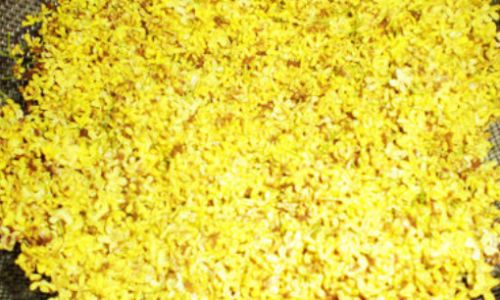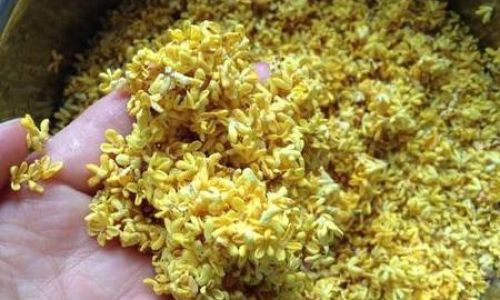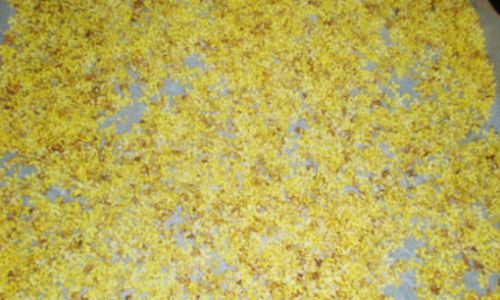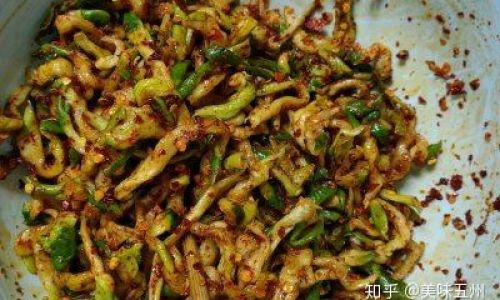Introduction
Osmanthus flowers, known for their sweet fragrance and delicate beauty, are a cherished addition to gardens and culinary delights across many cultures. Their aroma is often likened to that of honey and tea, making them a perfect ingredient for teas, desserts, and perfumes. Preserving fresh osmanthus flowers to enjoy throughout the year requires careful handling, particularly when it comes to drying them. This guide will provide a comprehensive approach to drying and preserving fresh osmanthus flowers, ensuring you can capture their essence and enjoy their fragrance long after they’ve bloomed.
Understanding Osmanthus Flowers
Before diving into the drying process, it’s essential to understand the basics of osmanthus flowers. Osmanthus (Osmanthus fragrans) is a genus of evergreen shrubs and small trees native to China, though it has been cultivated worldwide for its fragrant blooms. There are several varieties, each with its unique fragrance and blooming period. The most common types include Jin Gui (golden osmanthus), Dan Gui (silver osmanthus), and Dan Dan Gui (fragrant osmanthus).

Osmanthus flowers typically bloom in late autumn, with clusters of small, white, yellow, or orange blossoms that release their scent most intensely during the day. The flowers are delicate and require gentle handling to retain their aroma and appearance during the drying process.
Preparing for Drying
-
Timing is Key
The first step in preserving osmanthus flowers is to harvest them at the optimal time. Look for flowers that are fully open but still retain their vibrant color. Avoid picking flowers that are wilting or have started to turn brown. The best time to harvest is usually in the morning, when the dew has dried but the sun has not yet reached its peak intensity. -
Gathering Tools
Use clean, dry tools to gather the flowers. Scissors or pruning shears are ideal for cutting the stems without damaging the blossoms. A basket or tray lined with paper towels or a clean cloth can help keep the flowers organized and protected from dirt and debris. -
Sorting and Cleaning
Once collected, sort through the flowers to remove any leaves, twigs, or imperfect blossoms. Gently rinse the flowers under cold running water to remove any dust or pests. Be careful not to soak the flowers, as this could cause them to lose their fragrance and structure. Pat them dry with a soft cloth or paper towels.
Drying Methods
There are several methods to dry osmanthus flowers, each with its own set of pros and cons. The choice of method will depend on your personal preference, the quantity of flowers, and the equipment available.
-
Air-Drying
Air-drying is the simplest and most traditional method. Spread the cleaned flowers in a single layer on a clean, dry surface such as a baking sheet, wire rack, or mesh screen. Ensure good air circulation by placing the flowers in a well-ventilated area away from direct sunlight and heat sources. This method can take several days to a week, depending on the humidity and temperature.- Pros: No special equipment required, preserves the natural color and aroma well.
- Cons: Time-consuming, requires space, and can be affected by weather conditions.
-
Dehydrator
Using a food dehydrator is a faster and more controlled way to dry osmanthus flowers. Set the dehydrator to a low temperature (around 95°F or 35°C) and spread the flowers in a single layer on the trays. The drying time can vary but is generally between 4-8 hours. Check the flowers regularly to ensure they are not over-dried.- Pros: Faster than air-drying, more consistent results, easy to monitor.
- Cons: Requires a dehydrator, can be energy-intensive.
-
Oven-Drying
Oven-drying is another option but requires careful monitoring to prevent the flowers from burning. Preheat your oven to its lowest setting (usually around 150°F or 65°C) and spread the flowers on a baking sheet lined with parchment paper. Prop the oven door open slightly with a wooden spoon to allow moisture to escape. Dry for about 1-2 hours, checking frequently.
- Pros: Fast, can be done in a home kitchen.
- Cons: Risk of burning, requires constant monitoring, may alter the color and aroma slightly.
-
Microwave Drying
Microwave drying is the quickest method but is not recommended for beginners due to the high risk of burning the flowers. Place a small batch of flowers on a microwave-safe plate lined with paper towels and microwave on low power for short intervals (10-20 seconds), checking and stirring after each interval. This method requires extreme caution and precision.- Pros: Extremely fast.
- Cons: High risk of burning, difficult to control, may alter the flavor and appearance.
Storing Dried Osmanthus Flowers
Once the flowers are fully dried, they need to be stored properly to retain their fragrance and quality. Here are some tips for storing dried osmanthus flowers:
-
Container Choice
Use airtight containers made of glass, ceramic, or stainless steel. Avoid plastic containers, as they can trap moisture and odors. Ensure the containers are clean and dry before use. -
Labeling
Label the containers with the date and type of osmanthus flowers for easy identification and tracking. This will help you keep track of the freshness and variety of your dried flowers.
-
Placement
Store the containers in a cool, dark place away from direct sunlight, heat, and humidity. A pantry or cupboard is ideal. Avoid storing them in the refrigerator or freezer, as the temperature fluctuations can affect the aroma and texture. -
Use Within a Year
For best results, use the dried osmanthus flowers within a year of drying. Over time, the aroma and color may fade, so it’s best to enjoy them while they are still fresh and fragrant.
Conclusion
Drying and preserving fresh osmanthus flowers is a rewarding endeavor that allows you to capture the essence of autumn and enjoy its sweet fragrance throughout the year. By following the steps outlined in this guide, you can successfully dry and store your osmanthus flowers, ensuring they retain their delicate beauty and enchanting aroma. Whether you choose air-drying, using a dehydrator, oven-drying, or microwave drying, the key is to monitor the process closely and store the dried flowers properly. With a bit of patience and care, you can transform fresh osmanthus blooms into a long-lasting treasure that will enhance your culinary creations and home decor. Happy drying!





0 comments